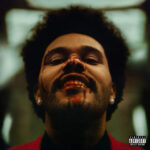It might come as a surprise to some, but the ukulele has a subtle yet interesting history within rock music. While not traditionally associated with hard-driving rock anthems, this small, four-stringed instrument has made its way into the music of some iconic rock artists, often in unexpected ways.
You might need to listen closely, but the ukulele’s gentle strumming can be heard in the intricate arrangements of songs like ‘I’m waiting for the day’ and ‘Caroline, No’ by The Beach Boys. Despite Brian Wilson’s dense production, featuring layers of strings, vocals, and sound effects, the ukulele subtly adds to the texture of these tracks.
The reason the ukulele isn’t a staple of rock music is partly historical. Rock music truly emerged in the 1970s, a period when the ukulele’s popularity had waned. Instead, the ukulele found a niche in more poppy, quirky, and ballad-like genres, rather than the high-energy dance music typically defined by a strong backbeat.
However, many British rockers who came to prominence in that era actually began their musical journeys on the ukulele. Some even revisited the instrument on recordings, though often not for their quintessential “Rock Songs.”
Take Brian May of Queen, for example. He incorporated the ukulele into tracks like ‘Good Company’ (from 1975), a song with a dixieland flavor reminiscent of George Formby, and ‘Bring Back That Leroy Brown’ (1974), which leans towards vaudeville. While played by a rock icon, these songs themselves are not strictly rock. Similarly, Pete Townshend of The Who used the ukulele on ‘Blue, Red and Grey’ (1975). This song, with its simple arrangement and optimistic lyrics, was almost included as a demo, highlighting its lighter, less ‘rock’ nature in Townshend’s own view.
Notably, these ukulele appearances often didn’t feature the lead singers of Queen or The Who, further distancing them from the bands’ core rock identities.
Even The Beatles, known for their string-instrument talents, had a fondness for the ukulele, with numerous anecdotes attesting to their ukulele enthusiasm. Yet, their recorded output with the instrument is sparse. Paul McCartney played ukulele on ‘Ram On’ (1971), and George Harrison included it on a posthumous track, ‘The Devil and the Deep Blue Sea’ (2002), another song with a tin pan alley feel. He also added ukulele to the end of ‘Free as a Bird’, a collage-like song initially composed in 1977 but finalized and released in 1995.
While the ukulele may not be the first instrument that comes to mind when you think of rock songs, these examples demonstrate its surprising presence in the genre’s history, often adding a unique and unexpected dimension to the music of rock legends.

